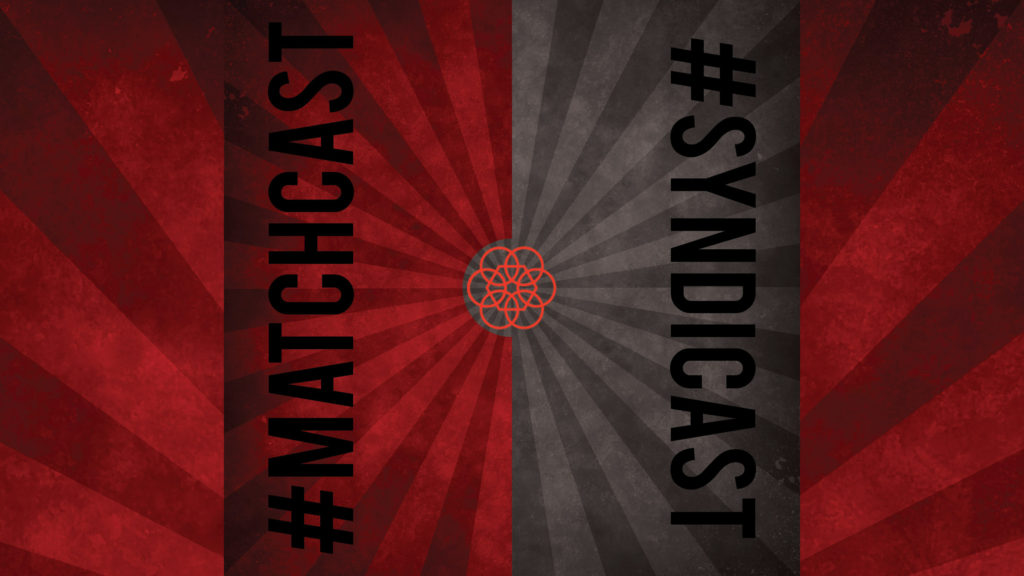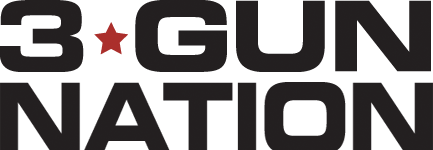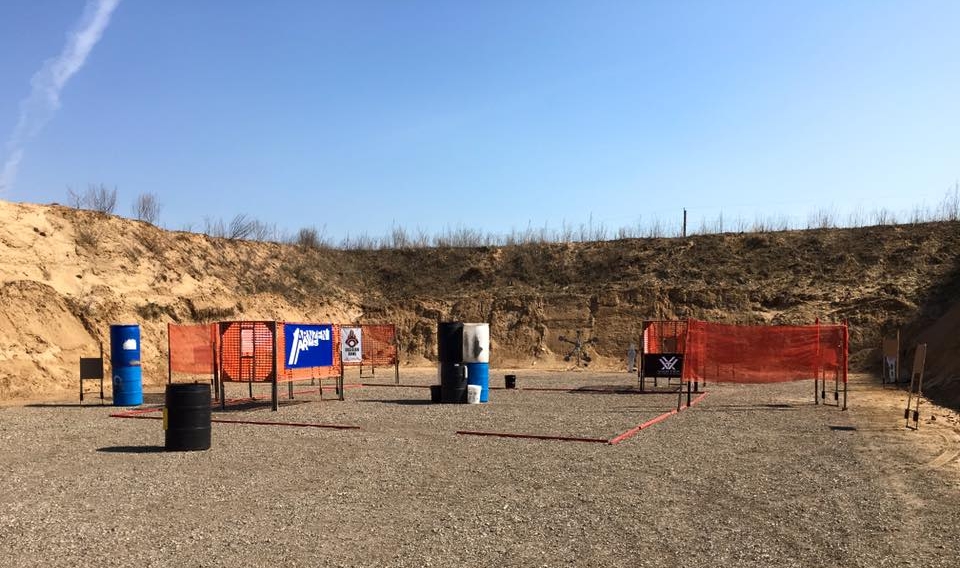What are the first skills necessary to victory that come to mind when we talk about 3-gun? Fundamentals? Movement? Accuracy? Speed? I can testify to all these, as both poor accuracy, and sloppy reloads have pushed me lower on the ranking than I had aspired for. These can be corrected, but what about the stage plan? Is there a perfect one? Decision-making is what we do while on the road, or when we’re planning the week’s goals, and if Confucius had anything to say about it I imagine he’s give some wisdom like “lessons can be learned from all things.” But it’d be in a language I don’t speak, and with more syllables and less words.
That planning is precisely the component of discussion, for even when assessing one’s own route within a stage, the shooter is practicing a process vital to decision making under stress. Whether in the home, in business, or simply driving, the very same process is a construct of their concentration as they choose, consciously or not, how they will maneuver the oncoming objective and obstacles. As the shooter improves at the sport, so does his or her ability to assess a problem, make a plan, and while submitting it to stress, perform or adapt the plan as he or she goes, with immediate feedback. Within a shooters first few matches he or she will most certainly hear someone comment about how challenging it can be to stick to a stage plan. As he or she continues competing eventually they find themselves at the end of a stage that didn’t go so well, envisioning that as the timer first rang their stage plan began to crumble or outright vanish with the beep.
As I’ve been shooting, most often a stage appears to have only one or two “paths” to complete with an aggressive time. Let me be the first to say that in my first match I looked on what I thought was an easy stage with joy, and upon finishing realized that my poor planning and observation cost me more than one Failure to Engage. Learning these lessons early, I began to understand why it was everyone higher than me on the final scoreboard spent as much time as they could on the stage before their turn. So planning is necessary in the sport. In life I also recognize that planning is important, and the lessons often came with the same sharp sense of “ouch.”
Within a new shooter, as with someone tackling a new challenge, the process is already in effect, though mostly instinctual. When facing any challenge, such as their first stage or first assignment, the subconscious is active even while surveying the task at hand. This is reactionary, as the shooter is deciphering how the stage works, and what they must do to complete it. Modestly aware of their own ability, they are often focused on performing well with their tools, which tends to be a chief concern. The stage is planned mostly to focus on where the targets are located, and this stage is best defined when the reloads are all performed at slide lock: when absolutely necessary. Under the stress the shooter’s control may loose focus, targets may be neglected, and quickly the desire to “walk the stage” arises, that he may start to develop a route or method. This may go well for some, and for some time, but in order for the shooter to proceed with success, they soon learn to plan their stages deliberately.
In problem solving, the will of the individual shows the first signs of direction by addressing what lies before them. An instinctual grade of planning is involved, as they are conscious of challenges, obstacles, and the abilities of themselves or their team. Just as a new competitor knows how their firearm is reloaded, so an observant adept knows necessary actions needed to accomplish his goal, but may not deliberately plan their specific application. When under stress, problems are often dealt with as they appear, with confidence in ability, or adaption as necessary.
In this phase, the goal is often in completion. The task of the 3-gun stage is much like the task of problem solving: a completed stage or goal is better than one left unaccomplished. Tenacity sustains him or her through objectives, and in the end he or she is satisfied at first with the accomplishment of a clean run, and productive victory.
Observing the top shooters incites a curiosity into their method. Often seen walking the stage with “finger guns” the experienced competitor is inherently instructing the observant novice. In attempts to improve his game, the newer shooter begins to make his own plan, and coupled with an increased confidence in his individual manipulation of his tools, he concerns less time with how to put 8 rounds into a shotgun tube, and redirects that effort into where, and when. After walking the stage, he or she starts planning reloads, in what order targets will be engaged, and how to maneuver obstacles so as to achieve the goal quicker and with fewer errors. As a competitor shoots more, he or she becomes better equipped to handle the stages as they are presented.
This is where the mass of development takes place in the sport, as with perfecting a repeated responsibility. A stage plan is much like an action plan of any obstacle in life. There are conditions to keep from being disqualified, advantageous routes, and decisions to be made between one strategy and another. A shooter may focus his or her concern on what their strengths are to best complete the stage, playing the sport for what it is, and hopefully remembering later to practice what needs improvement.
Refining the plan can only go so far, as a perfect strategy is just as susceptible to unraveling under stress. Sticking to the plan is just as important as having one, as once the timer rings, the shooter is up to the mercy of their own execution, without a chance to go back and refine. By practicing individual skills such as their draw, reload, or transitioning between targets some of the stress is relieved, but still amidst a stage one will be faced with split-second decisions to adjust on the fly, or carry on as they planned. While following the original plan may grant certainty in most movements, so sudden opportunities may present a chance to shave time and reach a better score. Even if the plan has worked so far, a missed target in the plan, or hasty shot changes the stage suddenly and a decision must be made.
Confidence to make these hasty decisions has both helped and hindered me in my game, but also in the rest of life. The countenance of a leader is under pressure when dealing with people or important tasks, as it is with the shooter aiming for the top. Making no decision is just as destructive as making a poor movement causing the shooter to have to re-engage, or make and adjustment costing that valuable time. I’ve lost just as much time changing my mind back and forth as I have missing a target, and it is here where I’ve seen the best competitors shine.
I once wondered if the top gunners had so much experience that they were seeing repeats of stages. Hoping this wasn’t the case, I began to watch as they both planned and performed between the berms at a match, and when I did see a difference between the walk-through and the live-fire, it was instantaneous. Clearly an alteration to their original plan had been made, but just as fast as the shooter identified the adjustment, they moved right into execution. No pause, or range dance between plans.
This reminded me of the glimpses of exceptional leaders, soldiers, and strategists. Though they spent time planning, be it “missions” in Ranger School, or directions while driving a car, the willpower to carry on amidst decisions dictated their success. A perfect plan never accomplished the objective before it was acted upon, and even the best ones had to overcome the very same obstacles. Having the perfect route to the new in-laws didn’t make driving on the ice any easier this Christmas, and the perfect plans didn’t guarantee first place on a stage. But without them, success is only a hopeful reliance on instinct and reactions.
How, then, is this vital skill improved? Consider three variables that can be improved by each shooter equally. As I’ve mentioned before, the independent skills are typically the focus of a new competitor. As the stress of reloading a shotgun, or making a long shot with any firearm is relieved by more practice, then the one less voice makes its way into your stage performance. This might mean taking a few notes home from each stage or match, with targeted skills to improve on deliberately. Between even my first 2 stages my shotgun game boosted, as I had practiced juggling shells into that tube till they were a little less than unnatural. Thirty repetitions is a good baseline for beginning to get that awkwardness out of the way, but three hundred reps is where the skill is finally smoothening out.
Just as practicing a skill such as a draw or getting a good sight picture with that new 1-to-6 you acquired over the holidays, so this principle can be applied to competition mechanics as a whole. The winter is upon us, but more time competing, more chances to feel how a stage is set, or what shooting an array is like, the better prepared your stage skills will be. Even if 3-gun is your primary sport, seek out other chances to compete, such as USPSA. This will build familiarity with how to avoid a disqualifying action. Transitioning from a tactical environment to the competition world, I had to get used to the “180 degree” rule. Only by shooting matches was this concern dimmed from shouting awareness to a confidant constant. As I plan more matches, and perform them, the rules become a part of each strategy, so knowing them is also a must.
Finally these last two; knowing my self, and my environment, contribute to what the third conscious improvement is to my game: learning to calm the chaos. With a calm state of mind, insert Jedi quote here, any sudden changes to my plan mid-stage are less prone to excessive inner questioning. Taking a shot I’m not confident in is already a gamble, and so even adapting a plan to a route I’m unsure of places each target in this disadvantageous place. Amplifying this effect is our friend adrenaline, which when honed, speeds up all my reloads like no one’s business. That is the necessary knowledge: the rush of each stage can be controlled and used, or left rampant, putting you at the mercy of your practice and instinct.
Thankfully being aware of it creates a confidence in me to better plan, and shoot accordingly this upcoming season. Knowing both the plan and the performance are needed, and attempting to polish up some other skills with dry-fire practice, I hope to spend less time this season mentally imbedded into loading that dreaded shotgun, and even less juggling strategies when I should be knocking down the steel down range.
Experience is it’s own trainer here. Deliberately while in a stage, when I come to these conflicts between what I planned, and what I see, I’ve got to remember that any action is better than costly contemplation, if the change isn’t an obvious advantage, or necessary to clean up a missed target, I’ll push myself to accomplish the task, then afterward assess the points of contention.




